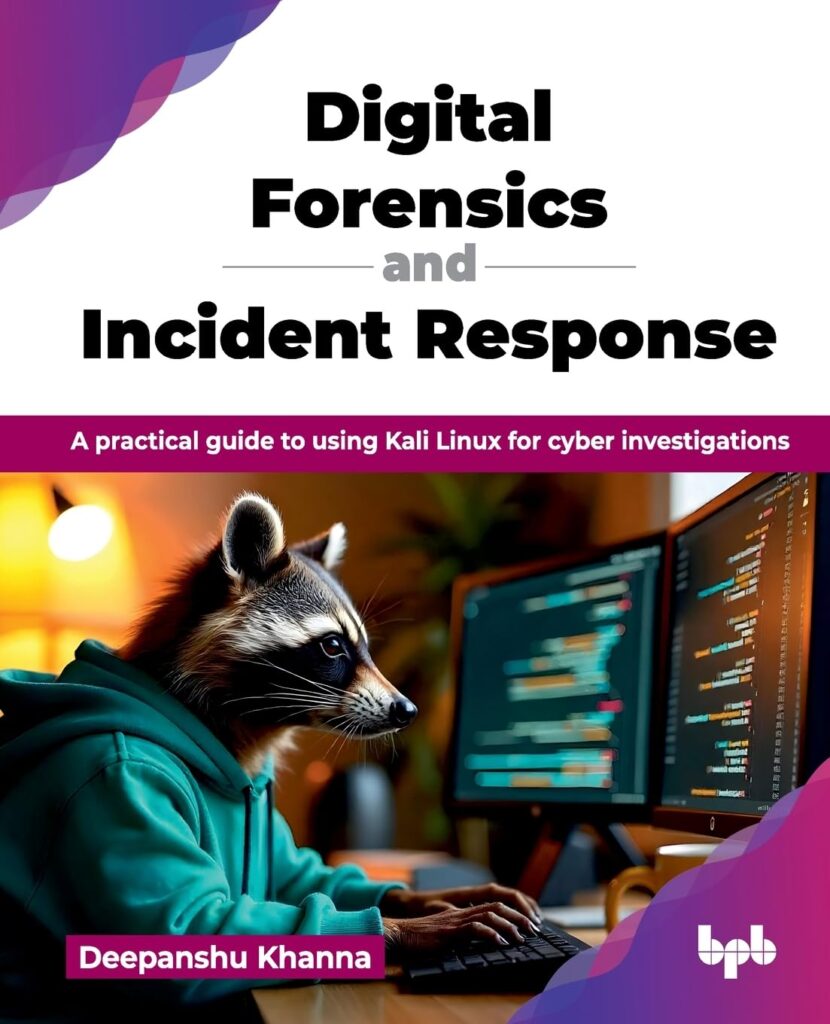Introduction
In the digital age, where technology permeates every aspect of our lives, the rise of cybercrime has become an inevitable consequence. From data breaches and identity theft to ransomware attacks and online fraud, cybercriminals are constantly evolving their tactics to exploit vulnerabilities in digital systems. As a result, the field of digital forensics has emerged as a critical discipline in the fight against cybercrime. Digital forensics is the process of uncovering, analyzing, and preserving electronic evidence to investigate and solve cybercrimes. This article delves into the intricacies of digital forensics, exploring how experts uncover hidden evidence in cybercrimes, the tools and techniques they use, and the challenges they face in this ever-evolving field.
What is Digital Forensics?
Digital forensics, also known as computer forensics, is a branch of forensic science that focuses on the recovery and investigation of material found in digital devices. This material can include data from computers, smartphones, tablets, servers, networks, and other electronic devices. The primary goal of digital forensics is to identify, preserve, analyze, and present digital evidence in a manner that is legally admissible in court.
Digital forensics is used in a variety of contexts, including criminal investigations, civil litigation, corporate investigations, and incident response. It plays a crucial role in uncovering evidence of cybercrimes such as hacking, phishing, malware distribution, and online fraud. Additionally, digital forensics is used to investigate other types of crimes where digital evidence may be relevant, such as intellectual property theft, financial fraud, and even violent crimes.
The Process
The digital forensics process is a systematic approach to investigating digital evidence. It involves several key steps, each of which is critical to ensuring the integrity and admissibility of the evidence. The following is an overview of the typical digital forensics process:
1. Identification
The first step in the digital forensics process is identification. This involves recognizing and identifying potential sources of digital evidence. In a cybercrime investigation, this could include computers, smartphones, servers, cloud storage, and other digital devices. The identification phase also involves determining the scope of the investigation and the types of data that may be relevant to the case.
2. Preservation
Once potential sources of digital evidence have been identified, the next step is preservation. This involves ensuring that the evidence is not altered, tampered with, or destroyed. Preservation is critical to maintaining the integrity of the evidence and ensuring that it is admissible in court. This step often involves creating a forensic image of the digital device, which is an exact bit-by-bit copy of the data stored on the device. The forensic image is then used for analysis, while the original device is preserved in its original state.
3. Collection
The collection phase involves gathering the digital evidence from the identified sources. This may include extracting data from computers, smartphones, and other devices, as well as collecting data from network logs, cloud storage, and other digital sources. The collection process must be carried out carefully to avoid altering or damaging the evidence. Digital forensics experts use specialized tools and techniques to ensure that the data is collected in a forensically sound manner.
4. Analysis
The analysis phase is where the digital forensics expert examines the collected evidence to uncover relevant information. This may involve searching for specific files, analyzing network traffic, recovering deleted data, and examining metadata. The goal of the analysis is to identify patterns, connections, and other information that may be relevant to the investigation. This phase often requires a deep understanding of digital systems, as well as the ability to interpret complex data.
5. Documentation
Throughout the digital forensics process, it is essential to document every step taken. This includes documenting the methods used to collect and analyze the evidence, as well as the findings of the analysis. Documentation is critical to ensuring the integrity of the investigation and providing a clear and transparent record of the process. This documentation may be used in court to support the findings of the investigation.
6. Presentation
The final step in the digital forensics process is presentation. This involves presenting the findings of the investigation in a clear and concise manner, often in the form of a report or testimony in court. The digital forensics expert must be able to explain complex technical concepts in a way that is understandable to non-technical audiences, such as judges and juries. The presentation of the evidence is critical to the success of the case, as it must convince the court of the validity and relevance of the findings.
Tools and Techniques Used in Digital Forensics
Digital forensics experts use a wide range of tools and techniques to uncover hidden evidence in cybercrimes. These tools and techniques are designed to extract, analyze, and preserve digital evidence in a forensically sound manner. The following are some of the most commonly used tools and techniques in digital forensics:
1. Forensic Imaging Tools
Forensic imaging tools are used to create an exact copy of the data stored on a digital device. This copy, known as a forensic image, is used for analysis while the original device is preserved. Forensic imaging tools ensure that the data is copied bit-by-bit, without altering or damaging the original evidence. Some of the most commonly used forensic imaging tools include FTK Imager, EnCase, and dd (a command-line tool available on Unix-based systems).
2. Data Recovery Tools
Data recovery tools are used to recover deleted or lost data from digital devices. In many cases, cybercriminals may attempt to delete or hide evidence of their activities. Data recovery tools can often recover this data, even if it has been deleted or overwritten. Some of the most commonly used data recovery tools include Recuva, PhotoRec, and R-Studio.
3. Network Forensics Tools
Network forensics tools are used to analyze network traffic and identify evidence of cybercrimes. These tools can capture and analyze packets of data as they travel across a network, allowing digital forensics experts to identify suspicious activity, such as unauthorized access, data exfiltration, and malware distribution. Some of the most commonly used network forensics tools include Wireshark, tcpdump, and NetworkMiner.
4. Mobile Forensics Tools
Mobile forensics tools are used to extract and analyze data from smartphones and other mobile devices. These tools can recover data such as call logs, text messages, emails, photos, and app data. Mobile forensics tools are particularly important in cases where the suspect may have used a smartphone to communicate or carry out illegal activities. Some of the most commonly used mobile forensics tools include Cellebrite, Oxygen Forensic Detective, and XRY.
5. Memory Forensics Tools
Memory forensics tools are used to analyze the volatile memory (RAM) of a digital device. Volatile memory contains data that is temporarily stored while the device is in use, such as running processes, open files, and network connections. Memory forensics can be particularly useful in cases where the suspect may have used encryption or other techniques to hide evidence on the device’s storage. Some of the most commonly used memory forensics tools include Volatility, Rekall, and Redline.
6. Steganography Detection Tools
Steganography is the practice of hiding data within other data, such as hiding a message within an image file. Steganography detection tools are used to identify and extract hidden data from digital files. These tools are particularly important in cases where the suspect may have used steganography to conceal evidence. Some of the most commonly used steganography detection tools include Stegdetect, StegExpose, and StegAlyze.
7. Password Cracking Tools
Password cracking tools are used to recover passwords from encrypted files or systems. In many cases, cybercriminals may use encryption to protect their data, making it difficult for investigators to access. Password cracking tools use various techniques, such as brute force attacks and dictionary attacks, to guess or recover passwords. Some of the most commonly used password cracking tools include John the Ripper, Hashcat, and Ophcrack.
8. Forensic Analysis Software
Forensic analysis software is used to analyze and interpret digital evidence. These tools provide a wide range of features, such as file carving, keyword searching, and timeline analysis, to help digital forensics experts uncover relevant information. Some of the most commonly used forensic analysis software includes Autopsy, X-Ways Forensics, and Magnet AXIOM.
Challenges in Digital Forensics
While digital forensics is a powerful tool in the fight against cybercrime, it is not without its challenges. The field is constantly evolving, and digital forensics experts must stay ahead of the latest trends and techniques used by cybercriminals. The following are some of the most significant challenges faced by digital forensics experts:
1. Encryption
Encryption is one of the most significant challenges in digital forensics. Cybercriminals often use encryption to protect their data, making it difficult for investigators to access. While password cracking tools can sometimes be used to recover encrypted data, strong encryption can be virtually impossible to break without the correct key. This has led to an ongoing “arms race” between law enforcement and cybercriminals, with each side developing increasingly sophisticated encryption and decryption techniques.
2. Anti-Forensics Techniques
Anti-forensics techniques are methods used by cybercriminals to evade detection and hinder digital forensics investigations. These techniques can include data obfuscation, file wiping, and the use of steganography. Anti-forensics techniques are constantly evolving, and digital forensics experts must stay up-to-date with the latest methods used by cybercriminals to counteract these techniques.
3. Volume of Data
The sheer volume of data that must be analyzed in a digital forensics investigation can be overwhelming. With the increasing use of cloud storage, social media, and other digital platforms, the amount of data that must be examined in a typical investigation can be enormous. This requires digital forensics experts to have access to powerful tools and techniques to efficiently analyze large volumes of data.
4. Legal and Ethical Considerations
Digital forensics investigations must be conducted in a manner that is legally and ethically sound. This includes ensuring that the evidence is collected and analyzed in a way that preserves its integrity and admissibility in court. Additionally, digital forensics experts must be mindful of privacy concerns and ensure that they do not overstep their authority when collecting and analyzing digital evidence.
5. Rapidly Changing Technology
The rapid pace of technological change presents a significant challenge for digital forensics experts. New devices, operating systems, and software are constantly being developed, and digital forensics experts must stay up-to-date with the latest technologies to effectively investigate cybercrimes. This requires ongoing training and education, as well as access to the latest tools and techniques.
Case Studies in Digital Forensics
To better understand how digital forensics is used to uncover hidden evidence in cybercrimes, let’s examine a few real-world case studies:
1. The Sony Pictures Hack
In 2014, Sony Pictures Entertainment was the victim of a devastating cyberattack. The attackers, who called themselves the “Guardians of Peace,” leaked sensitive data, including unreleased movies, employee salaries, and private emails. The attack was widely attributed to North Korea, which was allegedly retaliating against Sony for producing the movie “The Interview,” which depicted the assassination of North Korean leader Kim Jong-un.
Digital forensics experts played a crucial role in investigating the Sony Pictures hack. They analyzed the malware used in the attack, traced the IP addresses of the attackers, and examined the leaked data to identify the source of the breach. The investigation revealed that the attackers had used sophisticated techniques to gain access to Sony’s network, including spear-phishing emails and the use of destructive malware known as “Wiper.”
2. The Silk Road Investigation
The Silk Road was an online black market that operated on the dark web, allowing users to buy and sell illegal drugs, weapons, and other contraband using the cryptocurrency Bitcoin. The site was shut down in 2013, and its founder, Ross Ulbricht, was arrested and later convicted of multiple charges, including money laundering and conspiracy to commit computer hacking.
Digital forensics experts played a key role in the Silk Road investigation. They analyzed Ulbricht’s laptop and discovered evidence linking him to the Silk Road, including chat logs, Bitcoin transactions, and server logs. The investigation also involved tracing Bitcoin transactions to identify other individuals involved in the operation of the site. The case highlighted the challenges of investigating crimes on the dark web and the importance of digital forensics in uncovering hidden evidence.
3. The WannaCry Ransomware Attack
In 2017, the WannaCry ransomware attack infected hundreds of thousands of computers worldwide, encrypting their data and demanding ransom payments in Bitcoin. The attack affected organizations in over 150 countries, including hospitals, government agencies, and businesses. The attack was attributed to the Lazarus Group, a hacking group linked to North Korea.
Digital forensics experts played a critical role in responding to the WannaCry attack. They analyzed the ransomware to understand how it spread and how it could be stopped. The investigation revealed that the ransomware exploited a vulnerability in Microsoft Windows, known as EternalBlue, which had been leaked by the Shadow Brokers hacking group. Digital forensics experts also traced Bitcoin transactions to identify the attackers and recover some of the ransom payments.
The Future of Digital Forensics
As technology continues to evolve, so too will the field of digital forensics. The following are some of the key trends and developments that are likely to shape the future of digital forensics:
1. Artificial Intelligence and Machine Learning
Artificial intelligence (AI) and machine learning (ML) are increasingly being used in digital forensics to automate the analysis of large volumes of data. AI and ML algorithms can be trained to identify patterns, anomalies, and other relevant information in digital evidence, making it easier for digital forensics experts to uncover hidden evidence. These technologies are particularly useful in cases involving big data, such as social media investigations and network forensics.
2. Cloud Forensics
As more organizations move their data to the cloud, digital forensics experts will need to develop new techniques and tools to investigate cloud-based evidence. Cloud forensics involves analyzing data stored in cloud environments, such as Amazon Web Services (AWS), Microsoft Azure, and Google Cloud. This presents unique challenges, as cloud data is often distributed across multiple servers and jurisdictions, making it difficult to collect and analyze.
3. Internet of Things (IoT) Forensics
The Internet of Things (IoT) refers to the growing network of interconnected devices, such as smart home devices, wearable technology, and industrial sensors. As the number of IoT devices continues to grow, so too will the need for IoT forensics. IoT forensics involves analyzing data from IoT devices to uncover evidence of cybercrimes. This presents unique challenges, as IoT devices often have limited storage and processing capabilities, making it difficult to extract and analyze data.
4. Blockchain Forensics
Blockchain technology, which underpins cryptocurrencies like Bitcoin, is increasingly being used in cybercrimes such as money laundering, fraud, and ransomware attacks. Blockchain forensics involves analyzing blockchain transactions to uncover evidence of illegal activities. This requires specialized tools and techniques to trace cryptocurrency transactions and identify the individuals involved.
5. Privacy-Preserving Digital Forensics
As concerns about privacy and data protection continue to grow, there is increasing demand for privacy-preserving digital forensics techniques. These techniques aim to balance the need for digital forensics investigations with the need to protect individuals’ privacy. This includes developing methods for anonymizing data, minimizing data collection, and ensuring that digital forensics investigations are conducted in a manner that respects individuals’ privacy rights.

“Digital Forensics and Incident Response” by Gerard Johansen offers a comprehensive guide to establishing an incident response framework, collecting and analyzing digital evidence, and integrating threat intelligence. Readers commend its practical approach, making it valuable for both newcomers and seasoned professionals in cybersecurity.
Conclusion
Digital forensics is a critical discipline in the fight against cybercrime. It involves the recovery, analysis, and preservation of digital evidence to investigate and solve cybercrimes. Digital forensics experts use a wide range of tools and techniques to uncover hidden evidence, from forensic imaging and data recovery to network forensics and memory analysis. However, the field is not without its challenges, including encryption, anti-forensics techniques, and the rapid pace of technological change.
As technology continues to evolve, so too will the field of digital forensics. The future of digital forensics will be shaped by trends such as artificial intelligence, cloud forensics, IoT forensics, blockchain forensics, and privacy-preserving techniques. Digital forensics experts must stay ahead of these trends and continue to develop new tools and techniques to effectively investigate cybercrimes.
In a world where cybercrime is on the rise, digital forensics is more important than ever. It is a powerful tool for uncovering hidden evidence, bringing cybercriminals to justice, and protecting individuals and organizations from the growing threat of cybercrime. As technology continues to advance, the field of digital forensics will play an increasingly vital role in ensuring the security and integrity of our digital world.
See Also
-

Unmasking Fake Photos: How Metadata Analysis and Reverse Search Reveal the Truth
-

The Secret Weapons of Smart Self-Defense in the Age of Cyberbullying
-

Secure Smarter: The Best Android Password Apps to Trust in 2025
-

Unlocking Safety: The Ultimate Mobile Device Security Policy Your Team Needs Now
-

Is Your Cloud Data Safe? The Must-Have Storage Policy Every Business Needs
-

Browse Like a Ghost: The Ultimate Guide to Private Surfing on All Your Devices with a VPN
